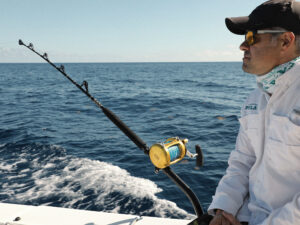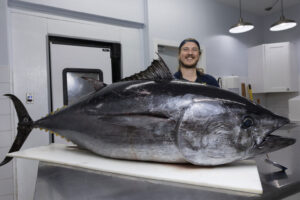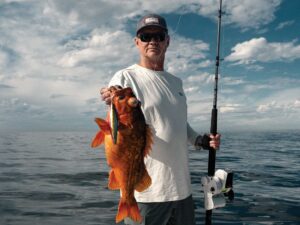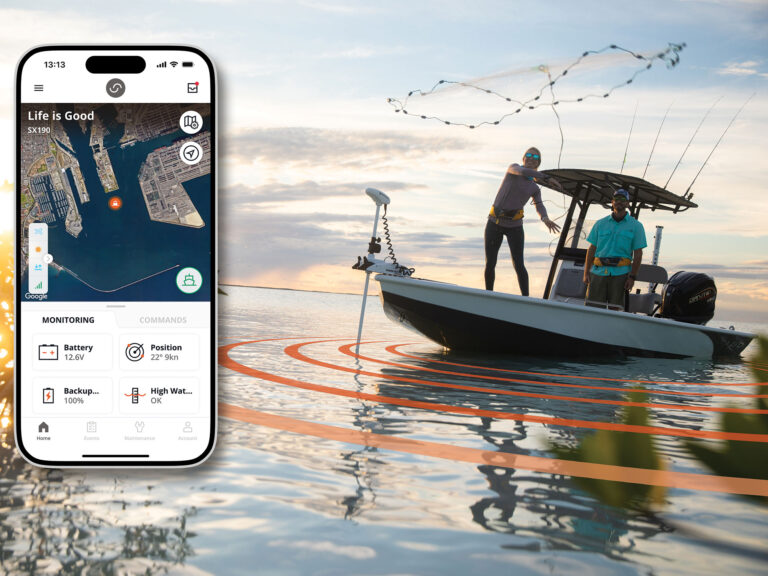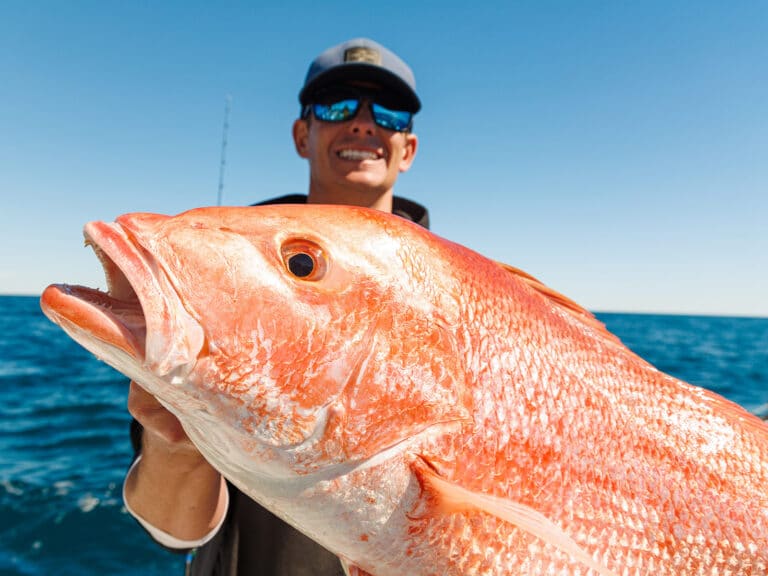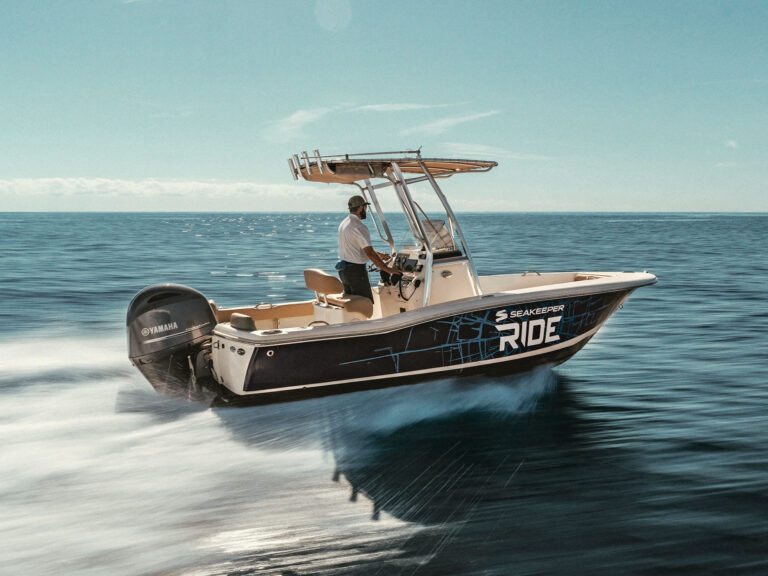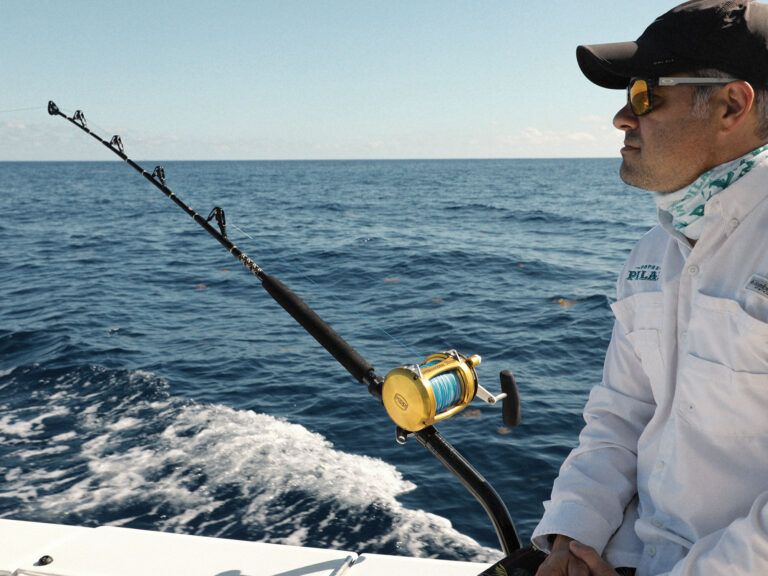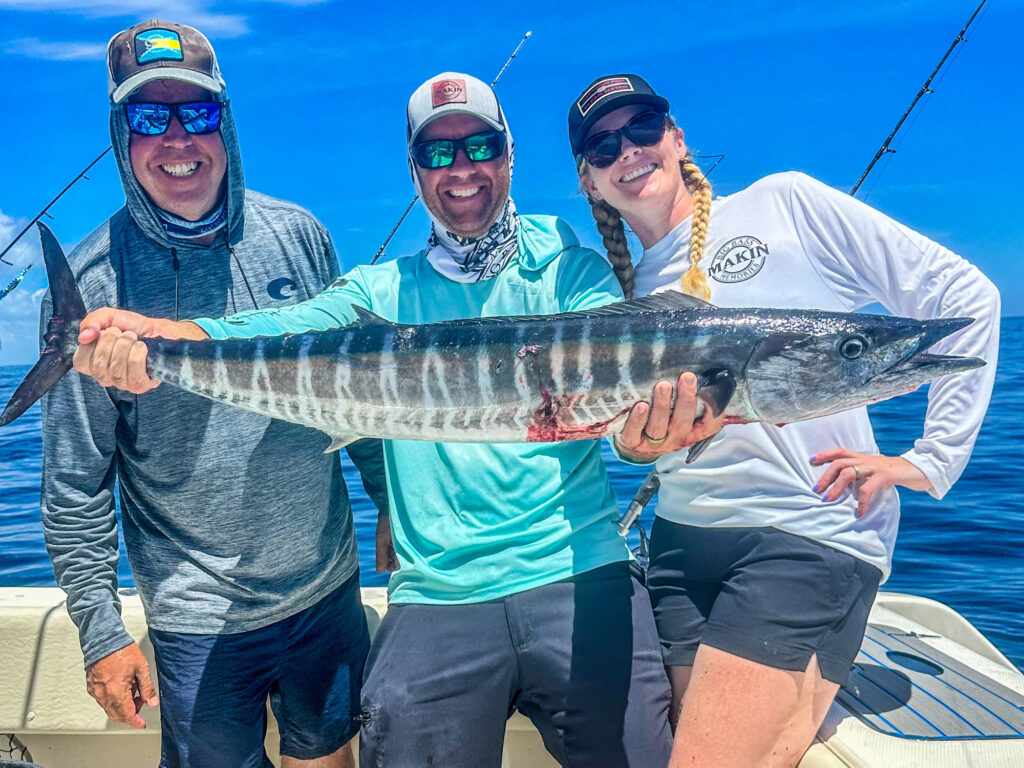
Once purely the domain of commercial anglers, a lot has changed in the market for power-assist reels. With significant recent improvements to today’s powerful electric reels, fishermen are finding new ways to utilize these tools.
I’ve been using them to jig for pelagics. The advantages of electric-assist are obvious for deep-drop jigging with 1,000 feet of line out, but what about targeting some of the fastest fish in the ocean in the pelagic zone? Where I fish the Atlantic off South Florida, gamefish include some notoriously fast swimmers such as wahoo and blackfin tuna. With the ability to reach speeds of 40 to 50 mph, these species like lures worked fast!
To engage these fast-swimming predators, it helps to cover the water column quickly and efficiently. Enter the highly productive technique known as high-speed jigging, in particular I’m jigging with electric-assist reels. This specialized equipment and its associated techniques can be super effective for targeting constantly moving species. Similar to high-speed trolling, electric reels give you the ability to quickly and effectively cover large areas of water in search of gamefish. Also, electric reels mitigate the fatigue of high-speed jigging, especially for anglers like me who suffer from a past shoulder injury.
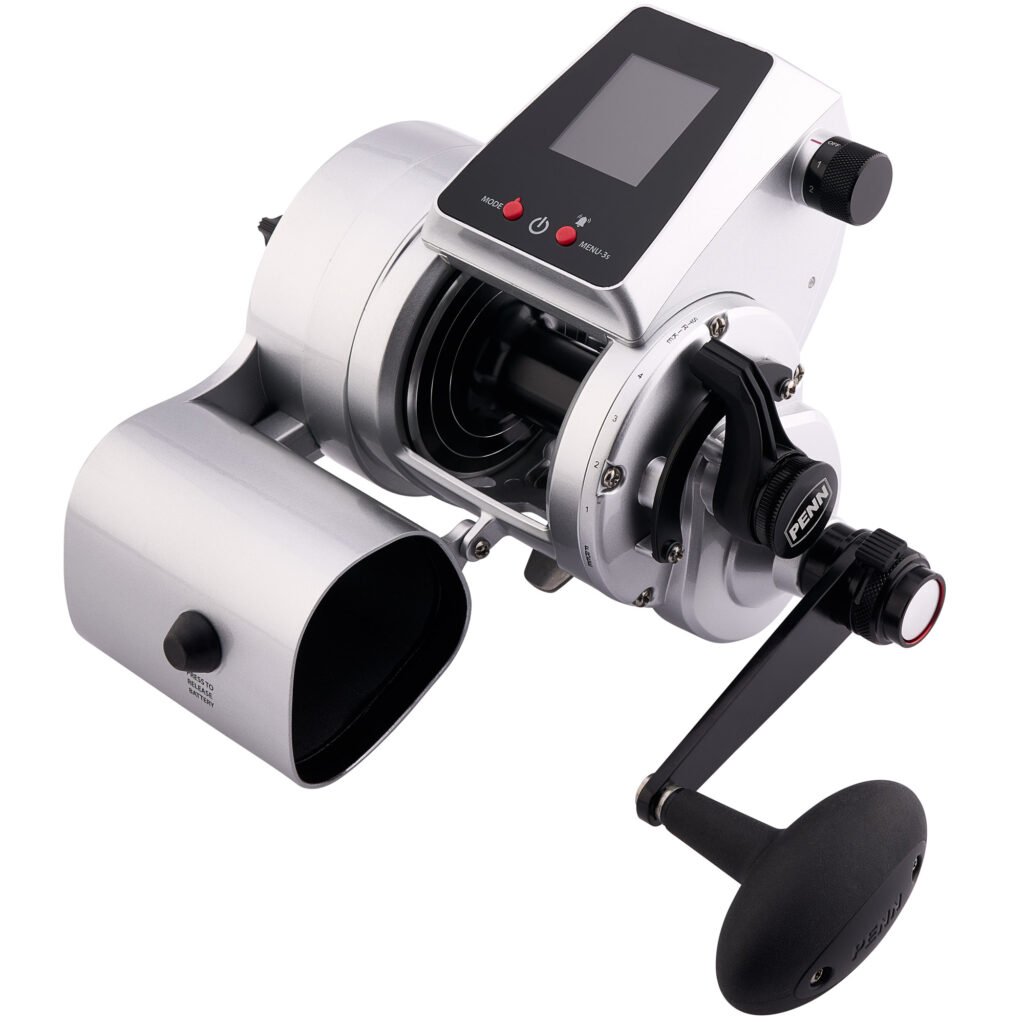
Features and Functions of Electric Fishing Reels
With today’s electric reels, the ability to set specific jigging patterns and the availability of lightweight battery packs or integrated power supply have tipped the odds significantly in the angler’s favor.
Offerings from Penn, Shimano and Daiwa all have programmable feature sets, and Penn’s new Fathom Electric reel won best of show at ICAST – the premier technology showcase for fishing gear. The Fathom’s built-in battery system makes it the first completely cord-free electric reel on the market.
Many electric-assist reels have flexible programmable modes, allowing the angler to automate and adjust lure retrieval as the day unfolds—a perfect tool for fishing specific areas of the water column.
Key features to look for in electrics include auto-stop for hands-free retrieve, override for manual jigging, spool tension knob to control the drop, and a line counter in feet or meters.
In search of a lightweight electric-assist combo with automated-jigging features for use with smaller jigs, I happened upon the Piscifun AtlantiX 1500. This reel is in line with current offerings on the market with programmable functions. Weighing in at just 17 ounces, this lightweight reel features an aluminum body, advanced motor technology, intuitive controls, and a self-jigging mode. It has a protective circuit to momentarily interrupt power until the reel cools should thermal conditions be exceeded.
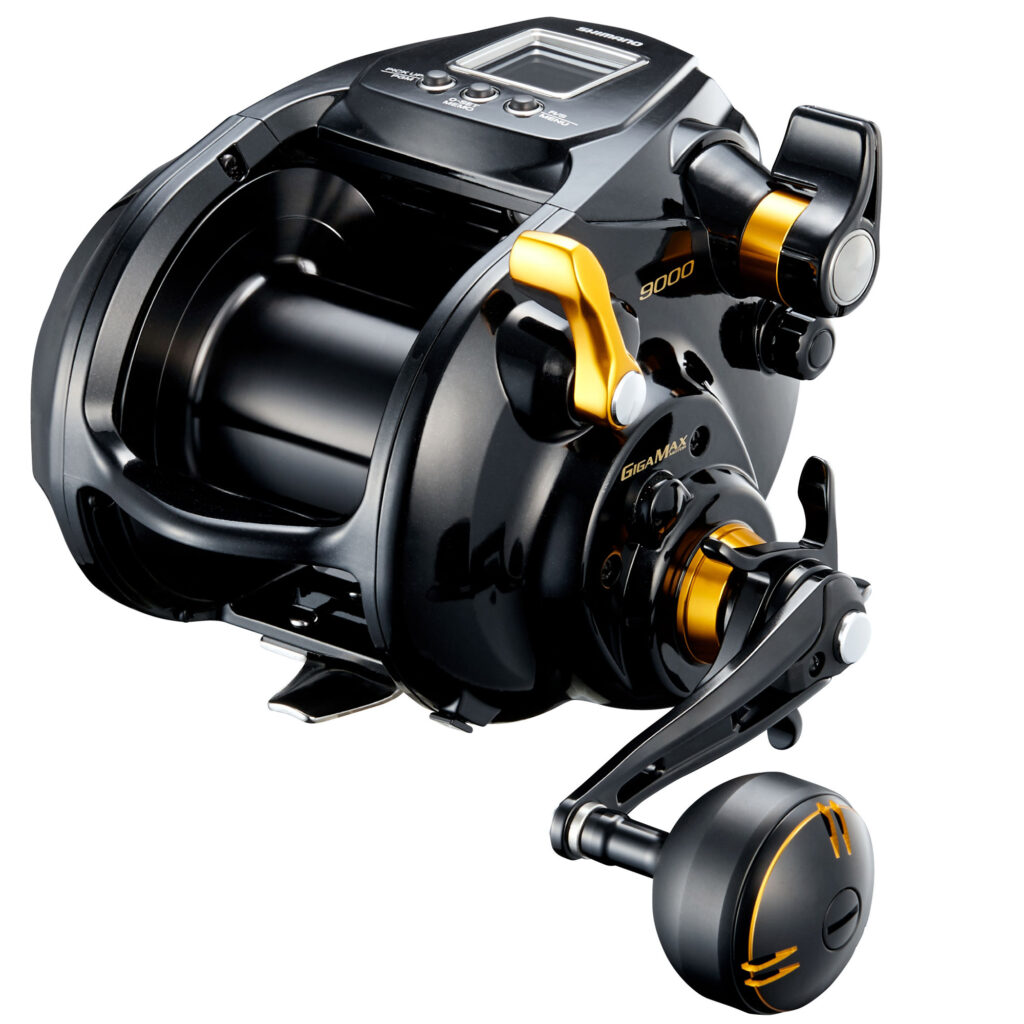
Other electric assist reels designed specifically for deep dropping and deep-water vertical jigging include offerings from Daiwa and Shimano. The Daiwa Seaborg series uses a variable speed Jog dial to easily control the speed of your jig while under power. This adjustable speed control is operated via a convenient thumb dial. The Seaborg G300J-DH fits in the angler’s palm comfortably and can be used to target species at depths exceeding 1,000 feet. The adjustable JOG power lever enables the angler to control the speed of their retrieve interactively. Daiwa’s newly developed MagMax G motor and ATD drag has one of the highest drag ratings for this size reel with a max pressure of 35 pounds.
A feature set unique to the new Shimano BeastMaster 3000 EJ series is the ability to control the strength and duration of each jigging motion. The 3000 size is not yet available in the US, but other sizes are. This new mode was developed to make e-jigging feel as close to traditional jigging while eliminating the fatigue of manual jigging. By selecting the jigging strength from three patterns — H (High), M (Middle), and L (Low) — the motion of the jig can be proactively changed from a soft fluttering motion of an injured prey (low) to a fast movement simulating a fleeing baitfish (hard). Another new feature is the one-jerk distance display, which shows the distance reeled up in one jerk before fluttering back down. This allows the angler to check and adjust the jigging pattern that best produces a strike. These are just a few examples of advancements in gear and functionality in a style of fishing that is rapidly gaining popularity because it’s effective for a wide range of species and depths. Jigging with electric reels is also fun, and it allows you to fish all day while saving your strength to battle fish.
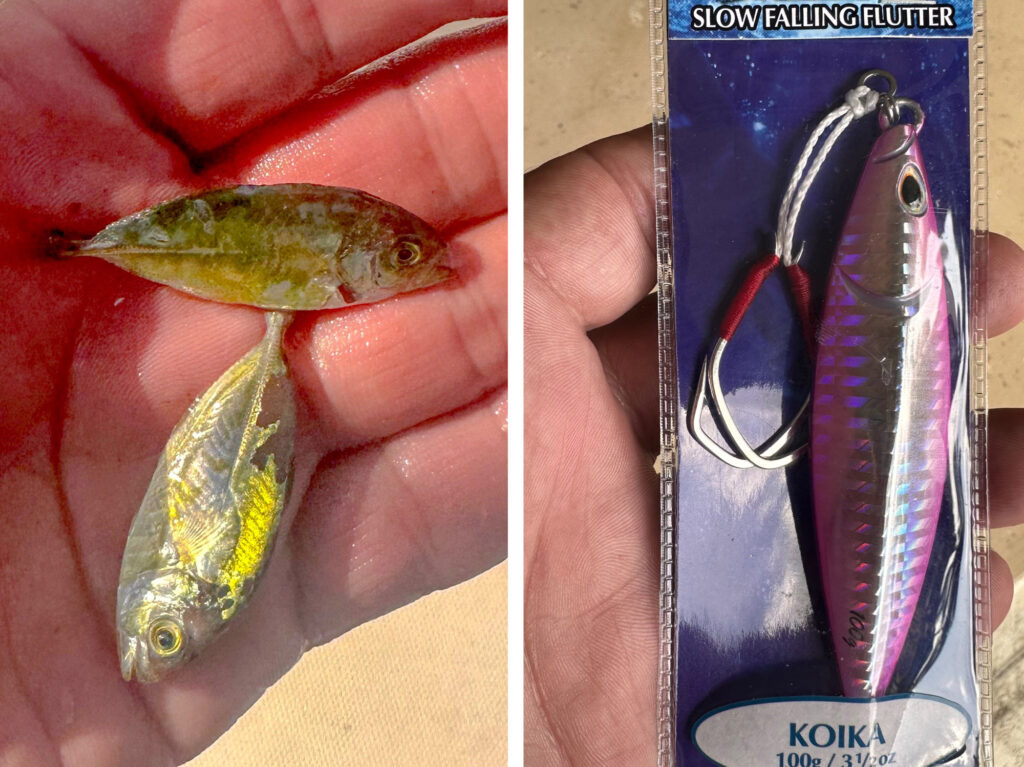
Rigging for Jigging with Electric Reels
When rigging to jig for pelagics, I spool my reel with quality braid in the 25/4 ratio. This means the line has an equivalent diameter to 4-pound mono with a 25-pound breaking strength. High tensile strength with a reduced line diameter lets you put a lot more line on the reel. A thinner braid also allows for a more vertical drop, due to less water resistance and therefore better control of the jig. I attach a short 4- to 6-foot Seaguar fluorocarbon leader in the desired breaking strength directly from the braid to the jig.
I paired my reel with a JYG Pro Revolution rod and a Piscifun 5000 mAh battery pack, which made for an excellent lightweight electric jigging combo. Using a short 3-foot battery cable and supplied pouch allows you to move the battery from the reel to a belt loop. A freshly charged battery supports approximately 180 drops on a single charge. I always carry spare battery packs for all my electric reels.
Paired with the right size jigs and using the advanced jigging features, this new breed of electric-assist reels are ready to tackle everything from deep dropping jigs for grouper, snapper and tilefish on the bottom to high-speed jigging the water column for pelagics. My current go-to jigs are from Nomad, Rapala, JYG and Shimano. Purchase your favorites in multiple sizes and body styles ranging from light to heavy. Make sure to purchase glow-in-the-dark options along with high-visibility and natural colors. I organize everything in a Mustad Jig Bag.
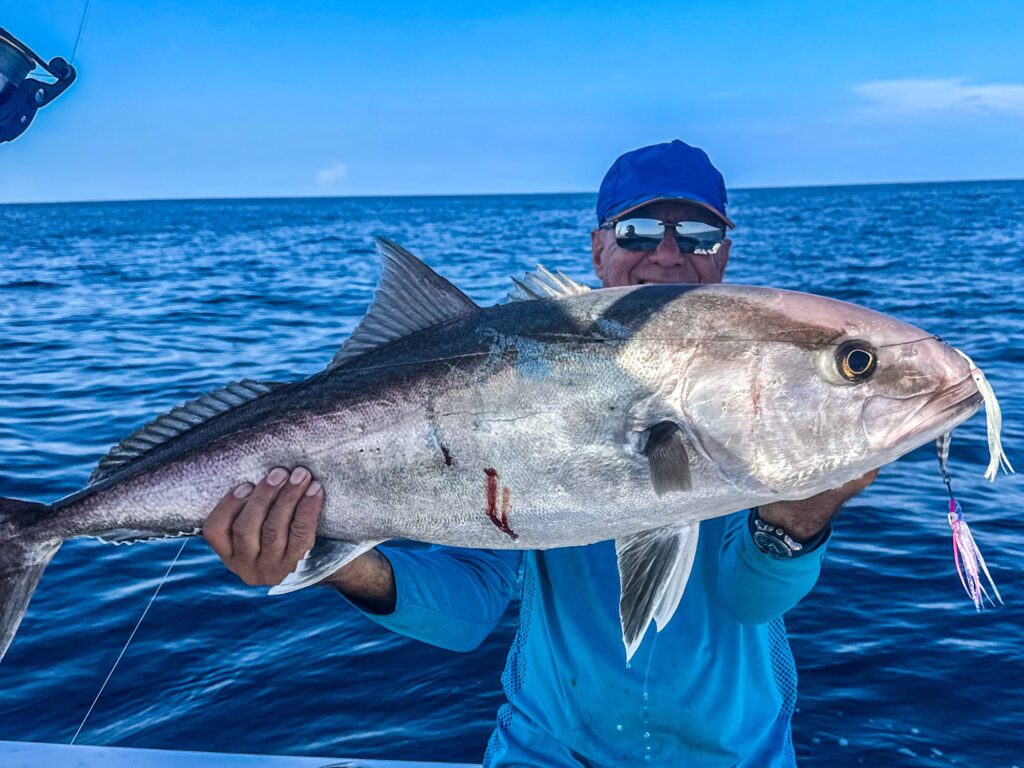
Finding and Targeting Wahoo, Blackfin Tuna and Amberjack
Targeting pelagic species, the number one environmental factor is finding areas that consistently hold bait. Look for reefs, hills, spires and larger wrecks in deep water that will hold baitfish that get swept along with the current. Once bait is located, set up for the drift and check your sonar screen frequently looking for “scratches” or fish feeding in the water column. We usually have one person assigned to calling out structural changes along with depth of marked fish. We also manually set our sonar for bottom. This gives a more accurate representation of fish in the water column.
In South Florida, strong steady wind out of the north and current moving south is best. This really gets the bait fired up and provides oxygenated water to improve fishing. It’s why the winter bite can be spectacular, but it also makes for uncomfortable sea conditions. When the wind and current oppose each other, the drift is slowest. While these are ideal conditions for targeting bottom species, it can make it difficult to keep up with speedy pelagics like tuna. More current allows you to stay with the tuna when they are moving quickly. If you need to slow your drift to keep jigs more vertical in the water column, a sea anchor or electric trolling motor becomes essential. You can also have someone dedicated at the helm using the motors to maintain your drift.
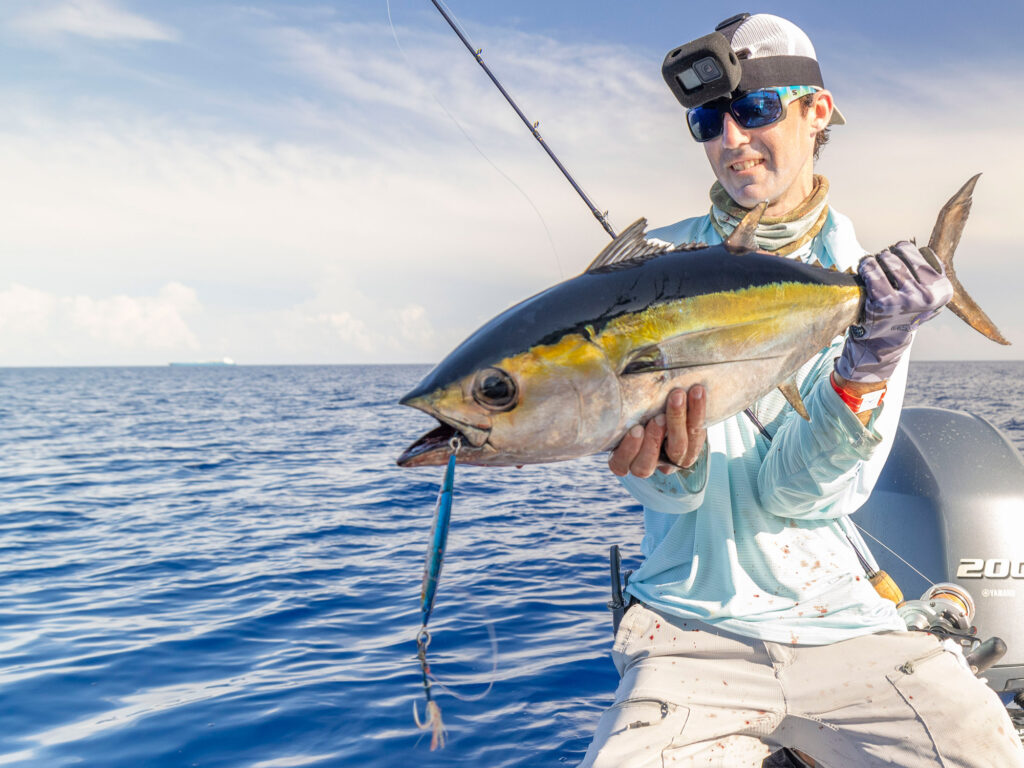
Tuna prefer to swim in and out of the thermocline layer and can be typically found from 250 feet up to the surface. High speed cruisers like wahoo prefer the upper 75 feet of the water column, while bottom dwellers like amberjack can be found close to structures such as reefs or wrecks. While it can be difficult to set up on fast moving fish chasing live bait balls, the conditions that produce this type of feeding will stay consistent, so tailor your drifts accordingly and stay with the bait.
Fast erratic movements with sudden flashes of color are the trigger most pelagics use to target a specific bait. When using an electric reel for jigging, you can easily alternate retrieves going from a slow yo-yo motion, which mimics a wounded baitfish or squid, to a full-on high-speed assault, which triggers the bite reflex by imitating a fleeing baitfish.
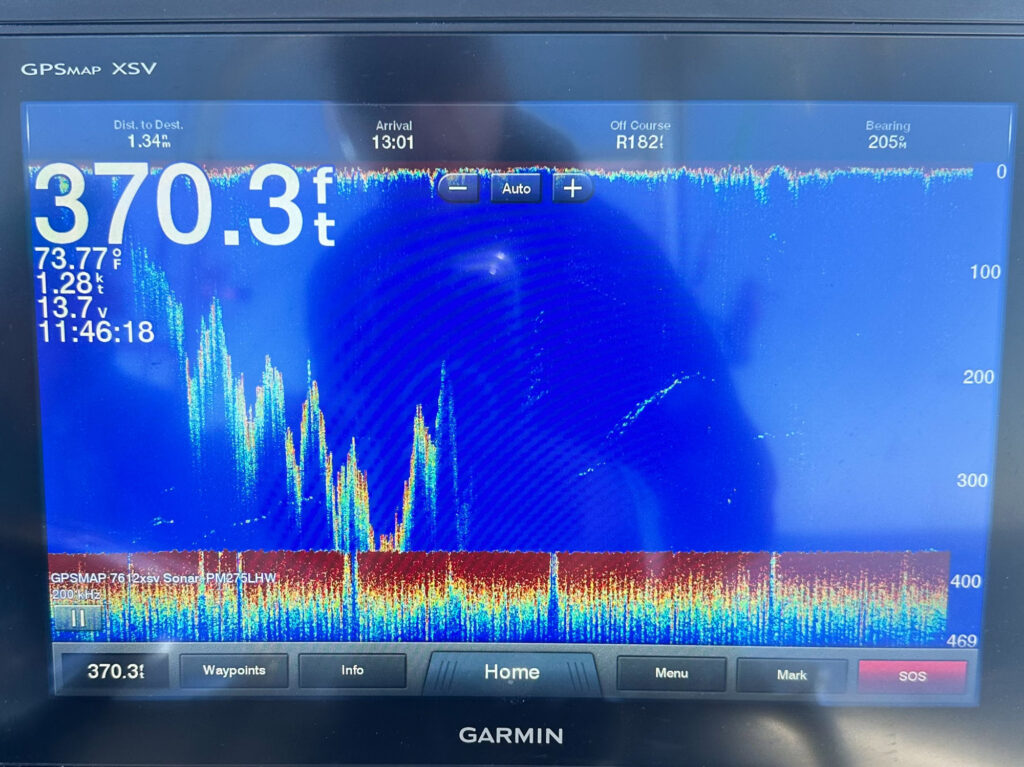
Experimenting with New Electric Reel Capabilities
Experiment with different techniques and settle on the one that works best on any given day. You also have the option to set the self-jigging function to allow the reel to jig the lure through a specific area of the water column. For example, if you’re marking tuna at 60 to 120 feet, you can set the reel to jig a lure to cover this depth range. By utilizing this capability, an angler can easily keep a lure in the strike zone for extended periods. Using the speed jog dial on reels like the Diawa Seaborg, you can easily simulate the up and down motion of a fleeing baitfish with just your thumb. Use the jog dial to speed up then slow down the jig as it’s retrieved through the water column.
The Shimano BeastMaster will even allow you to control speed and intensity of the up and down yo-yo motion of the jig. By changing the high, medium or slow setting, you can vary the way the jig reacts during the retrieve. This works well for pelagics as a jig can be worked throughout the entire water column. If you are targeting bottom species such as grouper, tilefish or vermilion snapper, drop until you hit bottom, then work the jig 15 to 20 feet off the structure, drop back down and repeat.
With multiple electric-assist combos of different sizes on board, you can cover the entire water column using different sized jigs. Make your initial lure selection based on reaching a desired depth without your line scoping. I like using jigs in the 80- to 320-gram range, but you can go as heavy as 700 grams if needed. Matching the hatch with a smaller jig is oftentimes the only way to get a strike when juvenile baits are present. In this case, an 80- to 120-gram jig with a lighter setup is preferable. Once hooked up, use the electric motor to apply pressure to turn the fish. Allow larger fish to run and then use the motor to turn them and apply constant pressure once the run is over.
A day jigging can be quite a physical workout — especially at high speed and at deeper depths covering the water column. Having electric-assist reels greatly increases your odds and reduces fatigue when targeting speedsters that hang just offshore of our coastal reef systems. Most of all, experiment with your power-assist gear. With recent advancements, anglers are finding new ways to utilize these tools. I alternate using powered setups for trolling, high-speed jigging and deep dropping for bottom fish with great success.

